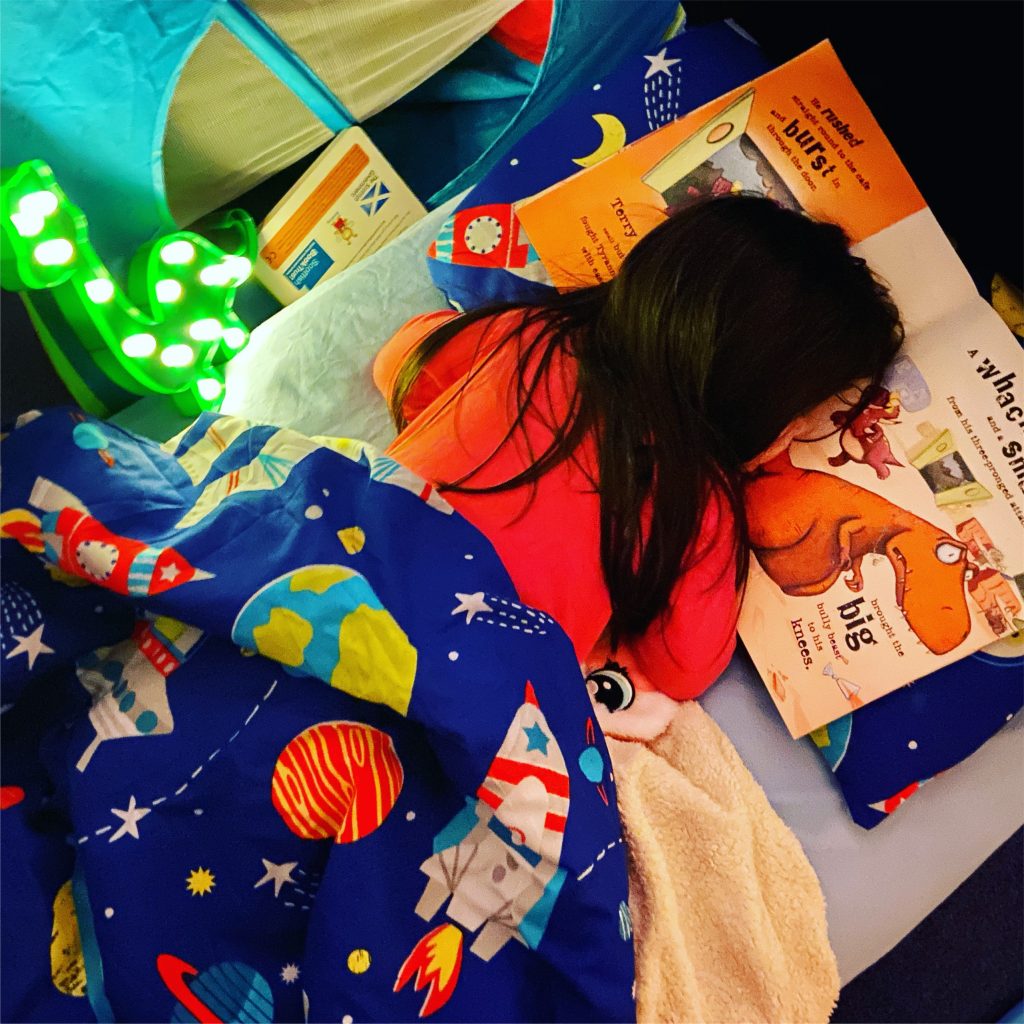Anyone who enjoys reading knows the power of a good story. I am sure we can all remember that feeling of getting lost in a book, forgetting where we are for a minute and becoming immersed in the world being described to us. Those page turner kind of books that you just can’t put down even though its midnight and you have to get up early for the school run. Those stories that transport you to another time or place, which help you escape the four walls you are in – oh what a tonic that has been this year! Stories and storytelling have driven culture since the early days of human beings, through oral stories passed down through generations, ballads and songs which capture a moment or experience in music, or written stories committed to the pages of a book.

“After nourishment, shelter and companionship, stories are the thing we need most in the world.” Philip Pullman
Stories too are important for children. Sharing stories is not just about language development and the foundations of literacy and reading – which are of course important. Stories also help children to develop a connection with and an understanding of the world and the people in it. They can help children to understanding their feelings and needs and those of other people. They can spark imagination and provide a window into the world. And of course they are a source of pure enjoyment and fun!
‘People think that stories are shaped by people. In fact it’s the other way around…’ Terry Pratchett
That’s why taking fresh eyes to the stories that we regularly use with young children is a fundamental part of a gender friendly approach. In fact, one of the things we ask nursery staff to do after they have been on our training is to complete an audit of the resources that they use within the nursery using a gender lens. We ask them to look at the books and stories and ask questions like:
- Does the book perpetuate gender stereotypes or does it show characters of different genders undertaking a variety of roles, particularly non stereotypical roles?
- Does the book include male and female characters?
- Do ‘alternative’ relationships or family types feature in the stories?
- Who chooses which books are read & what influences the choice?
Very often when we look at books through this lens we notice things that we didn’t before, even with stories that are very familiar to us. Considering some of our traditional fairy tales through a gender lens can be quite an eye opener for example. I still enjoy reading The Tiger Who Came to Tea to my young children, but am aware that the characters in the story do undertake quite stereotypical roles.
But we aren’t asking nurseries to get rid of every book which doesn’t meet a strict “gender friendly” criteria. Can you imagine a nursery without The Tiger Who Came to Tea or other such well-loved classics? I certainly still read it to my children. We are not trying to create an environment where we ignore gender, because let’s be honest, the messages that some of the more problematic books might be sending to children will probably not be new to them! Children are growing up in a gendered world – these messages are reaching them loud and clear from a variety of sources. A Gender Friendly approach recognises this and takes a number of steps to try to provide some sort of counter balance to these messages as well as helping children to spot and question gender stereotypes.
Today is World Book Day – a day when we celebrate everything wonderful about books. But maybe it’s also a day to take some time to reflect on some of the subtle and not to subtle messages we receive about gender through books. Maybe we could consider ways that we can use story and story telling to present a new narrative to children about what is possible for them.
Here are some suggestions to get you started:
- When reading a story try changing the gender pronouns. You can do this not only to provide more gender balance, but also to show characters undertaking non-stereotypical roles. How does it feel to you? Do the children notice?
- Use story time as an opportunity to teach children to notice and question gender stereotypes, or to have conversations which promote the idea that children can achieve or be whatever they want to be regardless of their gender. I like to ask questions like “Do you think it’s strange that all/most of the characters in the story were boys?” “Do you think that’s fair?” or “Do you think it would be ok if it was the boy character who made the picnic?” – you get the idea!
- Search around for stories which include characters of different genders undertaking non-stereotypical roles and use these to compensate for the messages that children may be receiving from other places about who can do what. There are great example out there. Check out the Global Equality Collective’s list of best books here https://thegec.org/gec-best-books for starters.